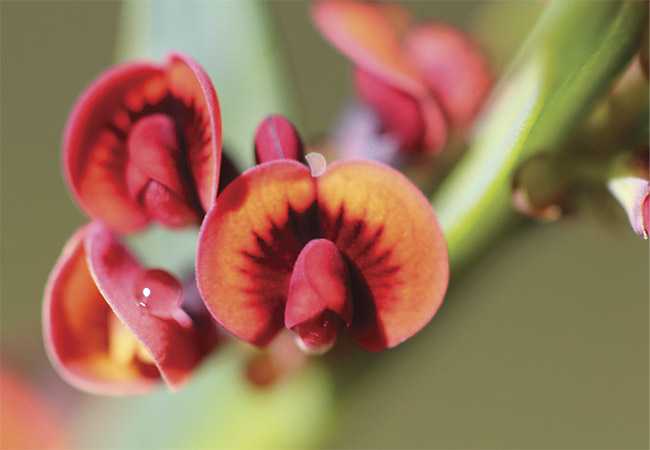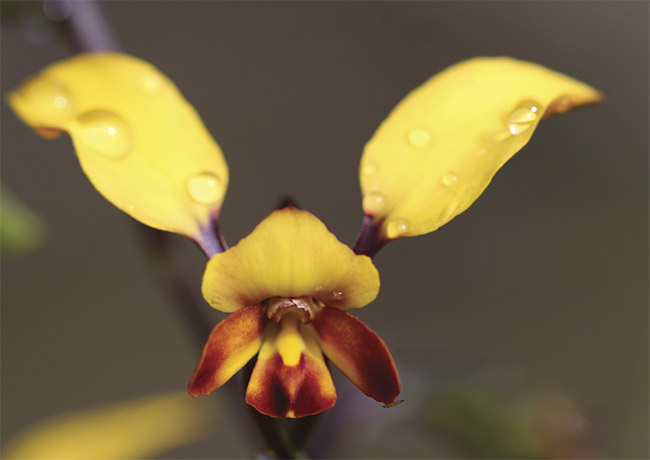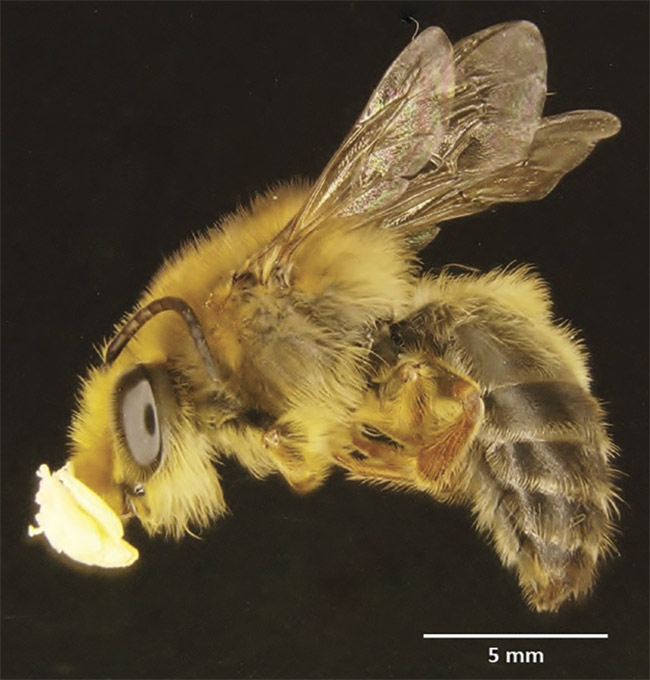In the animal kingdom, certain species are adept at camouflaging themselves to blend in with their surroundings to avoid the attention of predators. But in the plant kingdom, certain species of flowers blend in with their surroundings to increase the attraction of pollinators. Such is the case with Diuris brumalis, otherwise known as the donkey orchid, which grows in western Australia.
Those who study this flower have long been baffled by the fact that bees repeatedly visit this orchid to pollinate it, even though the flower does not provide nectar. After some investigation, a team of researchers from around the world learned that it accomplishes this with a form of spectral subterfuge — the plant presents UV signals that are very similar, and in some ways more pronounced, than those of Daviesia, the nectar-producing pea plant that grows in the same region.



Due to strong UV reflectance, the pea plant (Daviesia decurrens) (top) and the orchid (Diuris brumalis) (middle) are both attractive to the Australian bee (Trichocolletes capillosus) (bottom). Courtesy of Daniela Scaccabarozzi/Curtin University.
In their published research, which covered a study of the region between 2018 and 2020, the team was able to adjust the UV reflectance patterns presented by these flowers via a screening solution. With an Agilent spectrophotometer, they tested the UV patterns from various parts of the flowers; as it turns out, the orchid is considerably larger than the pea flower and its outer petals have the highest UV reflectance. They also used established models of bee vision and a UV camera to create false pictures depicting how bees perceive each flower. After all, to search for available flora like a bee, the team knew they had to see like one, too.
Daniela Scaccabarozzi, an adjunct research associate in the School of Molecular and Life Sciences at Curtin University, who helped lead the research, said it was important that they focused on a signal that was easy to isolate due to the number of variables in experiments that test visual differentiation.
“There are many types of deception in orchids, ranging from food deception (imitation of flowers that produce rewards to pollinators) to sexual deception (imitation of pheromones of the female insect to attract the male to copulate with the orchid, thinking it is mating with the female),” she said. “In all these strategies, the pollinator is lured to the orchid flower and by ‘mistake’ pollinates the orchid.”
A significant variable in their study pertains to the distance between the plants; they discovered that when there was greater distance between the flowers, the bees had a harder time distinguishing them after the screening solution was applied. This is comparable to humans using color samples, because having colors side-by-side provides a more accurate comparison than recalling colors on memory alone.
“Our outcomes showed that when the orchids were more distant to their model plants, they were more successfully visited (so likely pollinated). In particular thanks to salient UV signals, they were spotted better by the bees when far away from the model plants,” Scaccabarozzi said.
In the future, the researchers hope to study UV reflectance in a broader variety of plants outside of the orchid family, she said.
They started with D. brumalis because it had a clearly distinguishable pattern and larger petals; smaller flowers are harder to work with because color patterns are mixed more easily. And it appears that the UV lure is so strong, the bees keep stopping by to visit these plants — even if the meal turns out to be a disappointment.